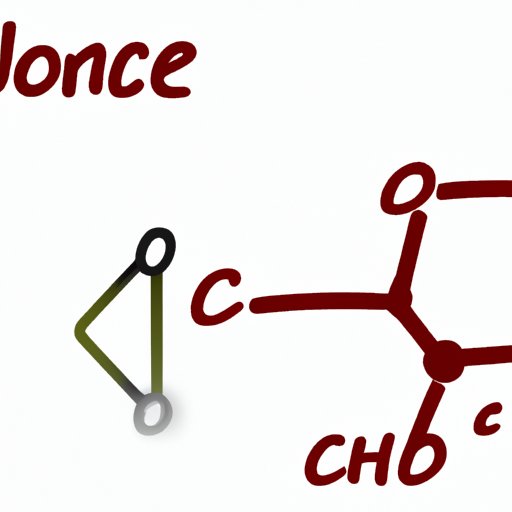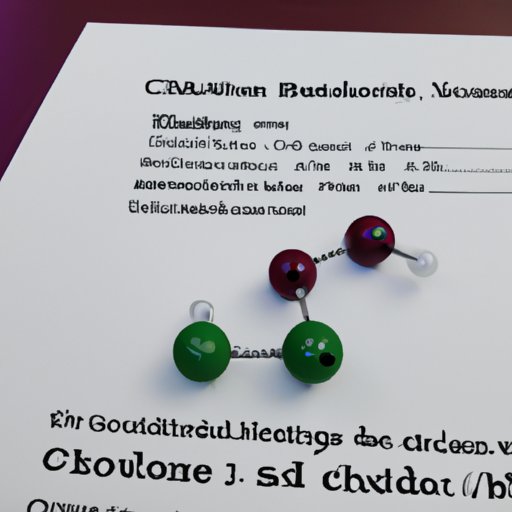Introduction
Chemical bonds are an essential part of the physical world around us. From the way atoms form molecules to how materials interact with one another, chemical bonds play a crucial role in understanding the structure and behavior of matter. In this article, we will explore what a chemical bond is in science and its significance.

Definition of a Chemical Bond
A chemical bond is a type of attraction between two or more atoms. This attraction occurs when the electrons in an atom’s outermost shell interact with the electrons in the outermost shells of other atoms. The result of this interaction is an electrostatic force that holds the atoms together in a stable arrangement, forming a molecule.

Overview of the Topics Covered
In this article, we will discuss the basics of chemical bonding, including how chemical bonds form and the types of chemical bonds that exist. We will also look at the role of electronegativity in chemical bonding, as well as the importance of chemical bonds in everyday life.
Exploring the Basics of Chemical Bonding
What is a Chemical Bond?
A chemical bond is the attractive force between two atoms that allows them to form a molecule. This attractive force can be either an ionic bond, which is formed by the transfer of electrons from one atom to another, or a covalent bond, which is formed when two atoms share electrons. In both cases, the electrons act as a bridge that connects the two atoms and creates a strong bond.
How do Chemical Bonds Form?
Chemical bonds form when the outer electron shells of two atoms interact with each other. When two atoms approach each other, their outer electron shells begin to overlap. If the overlapping electron shells contain opposite charges, then the atoms will be attracted to each other due to the electrostatic force of attraction. This force causes the atoms to move closer together, forming a bond.
Types of Chemical Bonds and Their Strength
Covalent Bonds
Covalent bonds are formed when two atoms share electrons. The shared electrons form a bridge between the two atoms, creating a strong bond. Covalent bonds are typically found in molecules that consist of two or more non-metallic elements, such as water (H2O).
Ionic Bonds
Ionic bonds are formed when one atom transfers electrons to another atom. The atom that loses electrons becomes positively charged, while the atom that gains electrons becomes negatively charged. These oppositely charged ions are then attracted to each other, forming a strong bond. Ionic bonds are typically found in molecules that consist of a metal and a non-metal, such as sodium chloride (NaCl).
Metallic Bonds
Metallic bonds are formed when atoms of a metal donate electrons to form a “sea” of delocalized electrons. These electrons move freely throughout the metal lattice, allowing the atoms to form a strong bond. Metallic bonds are typically found in metals such as iron (Fe) and copper (Cu).
Intermolecular Forces
Intermolecular forces are weaker than chemical bonds, but they still play an important role in molecular interactions. These forces are caused by the attractions between molecules due to differences in partial charge. Examples of intermolecular forces include hydrogen bonds, dipole-dipole interactions, and van der Waals forces.
Investigating Electronegativity in Chemical Bonds
What is Electronegativity?
Electronegativity is a measure of an atom’s ability to attract electrons. Atoms with higher electronegativities tend to attract electrons more strongly, while atoms with lower electronegativities tend to be less effective at attracting electrons. This property plays an important role in determining the type of bond that is formed between two atoms.
How Does Electronegativity Affect Bonding?
The difference in electronegativity between two atoms determines the type of bond that is formed. If the difference in electronegativity is small, then the atoms will form a covalent bond. On the other hand, if the difference in electronegativity is large, then the atoms will form an ionic bond. In general, the larger the difference in electronegativity, the stronger the bond.

Examining the Significance of Chemical Bonds in Everyday Life
Chemistry in Nature
Chemical bonds are responsible for the structure and function of all living things. Proteins, DNA, and enzymes are all made up of molecules held together by chemical bonds. These bonds allow these molecules to interact with each other, forming the basis for life on Earth.
Chemistry in Technology
Chemical bonds also play an important role in modern technology. For example, semiconductors are made up of atoms bonded together in a specific arrangement, allowing them to conduct electricity. Without chemical bonds, many of the devices we rely on every day would not be possible.
Conclusion
Summary of Main Points
In this article, we explored what a chemical bond is in science and its significance. We discussed the basics of chemical bonding, including how chemical bonds form and the types of chemical bonds that exist. We also looked at the role of electronegativity in chemical bonding, as well as the importance of chemical bonds in everyday life.
Final Thoughts on Chemical Bonding
Chemical bonds are an essential part of the physical world around us. From the way atoms form molecules to how materials interact with one another, chemical bonds play a crucial role in understanding the structure and behavior of matter. By gaining a better understanding of chemical bonds, we can gain insight into the fundamental principles of chemistry and develop new technologies that could improve our lives.
(Note: Is this article not meeting your expectations? Do you have knowledge or insights to share? Unlock new opportunities and expand your reach by joining our authors team. Click Registration to join us and share your expertise with our readers.)
